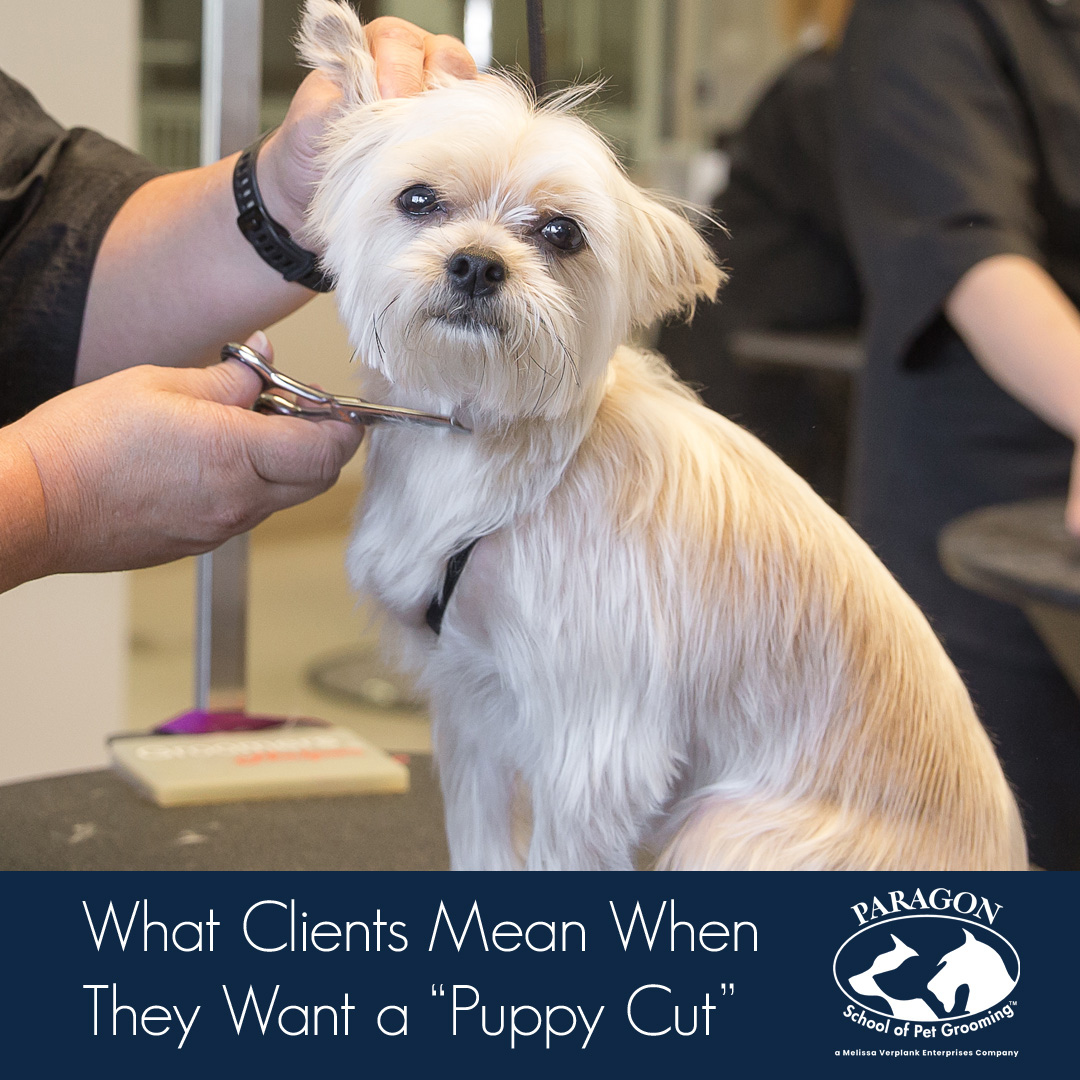In this video, Certified Master Groomer Melissa Verplank discusses ways to improve your speed by tracking your time and starting with the end in mind. She shares her own personal challenge in improving speed on Poodle feet. Learn how to increase your productivity by measuring your progress and celebrating your milestones.
Want great tutorials on grooming Poodles (and their feet) along with hundreds of other instructional videos? Check out www.Learn2GroomDogs.com. Use Code LUCKYDOG to get 50% off your first month.
Want to master Poodle feet (and much more!)? Notes from the Grooming table has a detailed section. Purchase it here: Paragon Book Shop
The best result is in the quality of the product that we put out in the way that we handle and interact with the pets that we deal with, as well as dealing with our clients. So, I just really want to emphasize that improving your speed is not about sacrificing anything. It’s about maintaining and actually enjoying what you’re doing even more so because you’re efficient. You’ve got confidence with what you’re doing, and every time you do it, you get consistent results that are yielding quality.
So, the first thing to help you improve speed is you got to know what the end result should look like. What does a quality round head look like? What does a clean well-fluffed dog look like? You’ve got to start with a clear picture of what does it look like when it’s done right. So, whatever technique you’re trying to improve, whatever thing you’re looking at, improving your speed, improving your quality, improving your confidence with, know what it looks like when it’s done right.
Then the next thing that I want you to really think about is clocks, timers. I still remember being in a salon that they were saying, “The entire salon had a problem staying on task, on time, getting dogs done when they were promised.” When I looked around, there was very few clocks, so clocks are going to be really, really critical. Wherever you’re at, you want to be able to quickly just glance up and see that clock.
You want to have a watch on that’s going to be able to stand up to the abuse of what a busy grooming salon is going to be. I find water-resistant, waterproof watches are great. All of us have our phones with us today. So, right on your phone, there’s generally going to be an app that’s got a timer on it. If you don’t want to use your phone, get an old-fashioned egg timer. It doesn’t matter. But you’ve got to be able to measure and know every second of your day, where you’re at, and what you’re doing.
Then to start improving on your speed, you got to measure it. So, if you are struggling to get a dog, a small-to-medium simple trim done in an hour or less, start measuring how long does it take you from the time you put that dog on the table to the time it gets to the tub, and from the tub to the drying area, and from the drawing area back onto the finish table, and how long does that finish take you? You need to break up your grooms, so that you know where you’re spending your time and how much time you’re spending in each one of those areas. Then start improving in each one of those.
I’ll give you a hint. Most of the time, the real trouble, the time waster is in the wet area. It’s in the bath and the dry. So, if you’re struggling to get a small-to-medium simple trim done in an hour or less, double check what your times are in there. I’ve got material out there on learntogroomdogs.com and also in my blogs that you can see a time sheet that tells you exactly where you should be.
So, research that a little bit. There’s a lot of material out there to help you improve your speed, but always have those clocks, those timers handy, and measure it. Know where you’re at. Then set yourself a goal. Set yourself a target. You want to beat it by one minute, by 30 seconds. You’re not looking to make big huge sweeping improvements at first. What you want to do is make very small incremental changes as you improve, as you focus on whatever task it is that you’re trying to improve your efficiency with, and celebrate the small wins.
Celebrating means just sometimes just giving your own self a pat on the back for hitting a target like, “Yeah, I did it.” Those types of things, those successes help you move forward, and if you don’t hit the target, if you don’t make it, don’t beat yourself up too bad. You got another chance, another time. Just keep measuring and keep tracking where you’re at.
When I first started grooming, I didn’t have any instruction. The groomer was fired. I was kennel help, and I got a call from my boss, and they said, “You’re it. You have a new role. You are now the groomer.” Gang, I didn’t know what I was doing. There wasn’t material out there. The internet didn’t even exist. There was very little material for me to teach myself how to groom dogs. My first day, I had six dogs on my table that I had to get done.
I didn’t know what I was doing. So, fast-forwarded, it got to the point that, yes, I was grooming dogs, and I always thought I was being pretty efficient and pretty good at what I was doing. But I will tell you there was one breed of dog that I hated. When I saw it, when it came across my roster, I just cringed because I knew that I was going to totally lose it on time and efficiency, and that was poodles, and it was poodle feet.
I didn’t mind anything else about the poodle, but the foot. When I first started grooming, when I had a poodle, each foot would take me five minutes, five minutes to do a foot, one foot. Down the road, it was always a struggle. I always made a mess out of it. All the dogs jerked. They pulled. They didn’t want me to handle their feet. I was making hamburger out of their feet because the blades were cutting them. I just didn’t know how to do it right.
So, poodle feet were just a huge struggle for me. I really dislike doing poodle feet. As my career grew and I got more experience, I started to understand what does it look like when it’s done right. I started to see the techniques that were being used that I wasn’t using, and I could improve upon what I was doing. Then at one point, I had the challenge. Somebody said, “Can you do four feet in three minutes?” I thought, “Ugh, are they kidding? There is no way. It takes me five minutes, four minutes to do a poodle foot.”
I’d gotten a little bit better over time, but it was still a huge time crunch for me to be efficient in that area. So, when I heard that four feet in three minutes, I thought, “All right, somebody is being able to do it. I’m going to figure it out,” so I did. It took me quite a while. I’m not saying I nailed it right out the gate, but at some point down the road, I did at height of my career, figure out how to do four feet in three minutes, and they were done well.
So, it can be done, but you’ve got to focus on it, and you’ve got to pay attention to what you’re doing. If you pay attention, if you set time goals for yourself, if you measure what you’re doing, and you celebrate your successes when you do it right, when you make an improvement, I guarantee each incremental little step will get you closer to being able to do a dog in an hour, and that’s basically what we look at is turning a dog an hour.
I’m not talking an elaborate trim or a big, hairy audacious, crazy thing. Not a doodle, but your small-to-medium size simple trims. You want to get those turned in at least an hour or less. So measure, track, and celebrate your success when you nail it.



 “Give my dog a puppy cut.”
“Give my dog a puppy cut.” Mother and daughter duo, Lisa and Taylor Worden, chose
Mother and daughter duo, Lisa and Taylor Worden, chose 